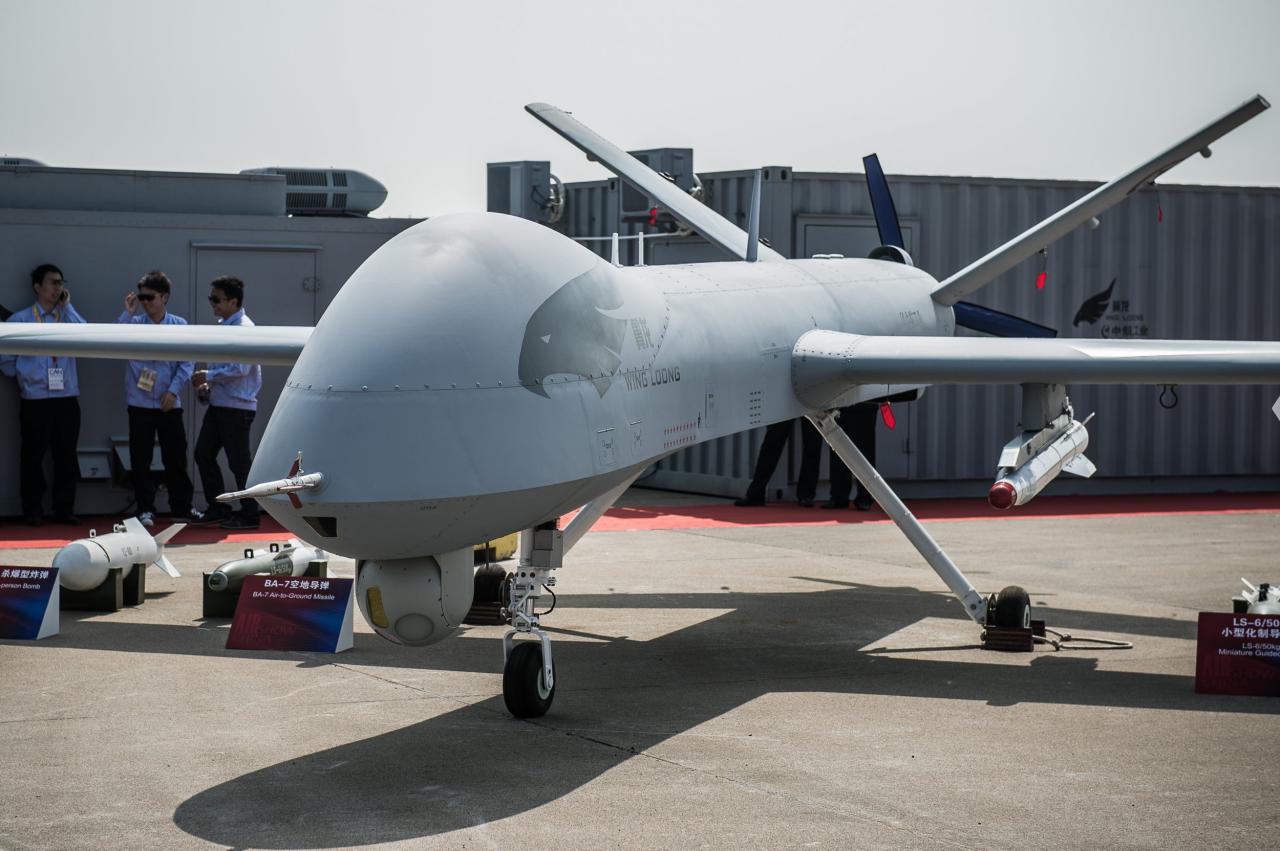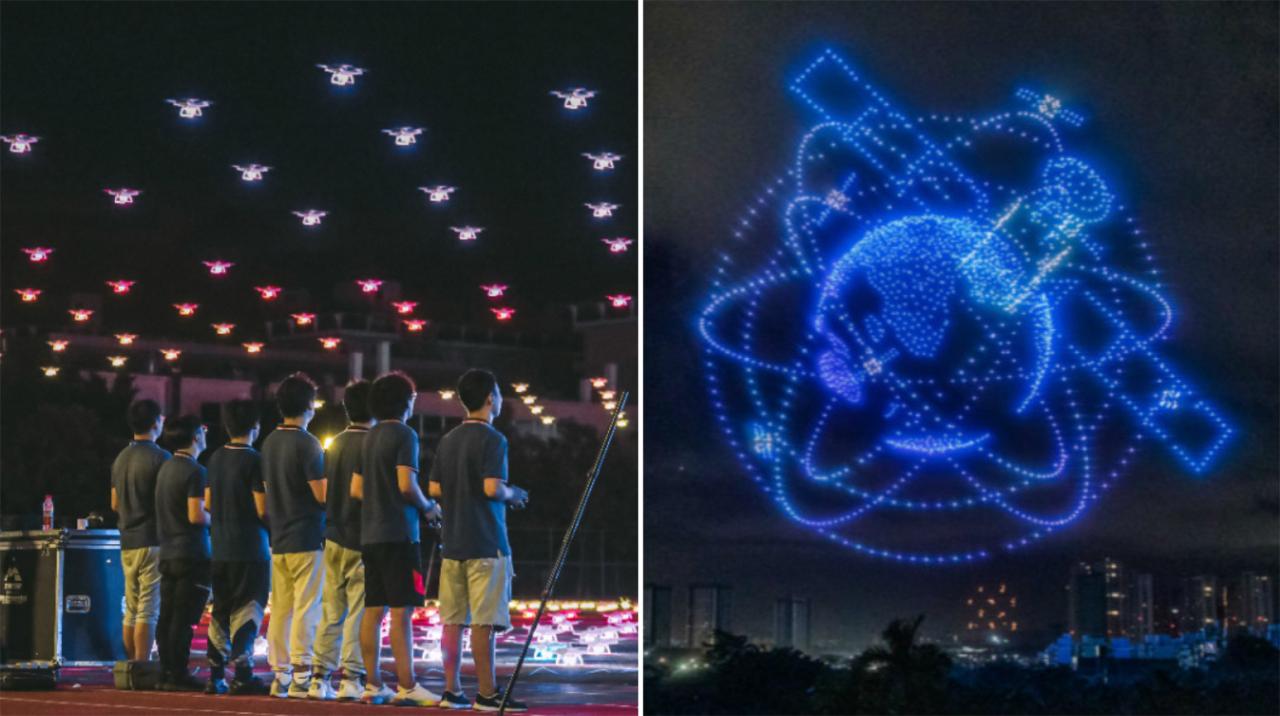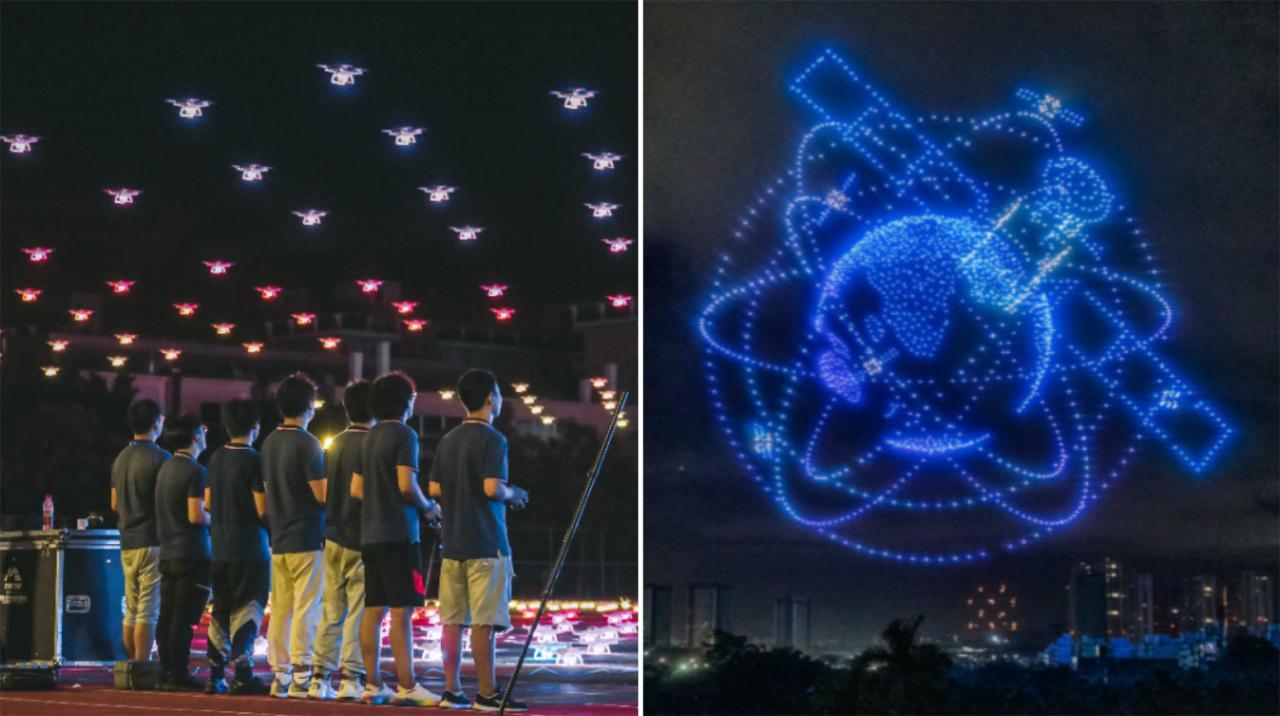China Drone Show 2054: Imagine a breathtaking display of thousands of drones painting vibrant, dynamic images across the night sky. This isn’t science fiction; it’s a glimpse into a future where advanced drone technology transforms entertainment, tourism, and even national identity. This exploration dives into the technological leaps, societal impacts, security concerns, and environmental considerations surrounding these massive aerial performances.
Imagine the China Drone Show 2054: a breathtaking spectacle of coordinated aerial displays. But before we get there, it’s worth noting that regulations are evolving globally. Check out the latest on new drone rules Canada to see how international standards might influence future mega-shows like the one in China. This gives us a glimpse into the potential future regulatory landscape for such events.
We’ll examine how China’s advancements in AI, materials science, and autonomous flight systems will shape these shows. We’ll also discuss the potential economic benefits, alongside the challenges of managing such large-scale events, including safety protocols and environmental impact. Get ready for a fascinating look at the future of entertainment and technology.
Technological Advancements in Chinese Drone Technology by 2054
By 2054, China’s drone technology is projected to witness significant advancements, surpassing many current limitations and pushing the boundaries of what’s possible. This progress will be driven by breakthroughs in autonomy, AI integration, and materials science, leading to drones with unprecedented capabilities.
Projected Advancements in Chinese Drone Technology, China drone show 2054
Advancements in autonomy will enable drones to navigate complex environments with minimal human intervention, utilizing advanced sensor fusion and sophisticated algorithms for obstacle avoidance and path planning. AI integration will allow for real-time decision-making, adaptive flight control, and enhanced situational awareness. Materials science breakthroughs will lead to lighter, stronger, and more energy-efficient drones with extended flight times and improved payload capacities.
Okay, so you’re curious about China’s drone show in 2054? That’s pretty far out! To get a feel for the scale and artistry involved, check out the amazing displays already happening now, like this year’s china new year drone show. These shows give you a good idea of what kind of technological advancements we can expect to see by 2054, making the future China drone show even more exciting to imagine.
For example, the use of graphene and carbon nanotubes could revolutionize drone construction, leading to significantly improved structural integrity and reduced weight.
Comparison with Other Leading Nations
While the United States, Israel, and several European nations also lead in drone technology, China’s projected advancements are particularly noteworthy due to its focus on large-scale integration of AI and its substantial investment in research and development. China’s strength lies in its ability to rapidly deploy and scale technological advancements, potentially leading to a significant market share in both civilian and military applications.
However, other nations may hold an advantage in specific niche areas, such as specialized sensor technologies or miniaturization.
Hypothetical Scenario and Drone Specifications
Imagine a 2054 scenario where a cutting-edge Chinese drone, the “Dragonfly,” is deployed for search and rescue operations following a natural disaster. Its advanced AI allows it to autonomously navigate debris fields, identify survivors using thermal imaging and facial recognition, and deliver essential supplies.
| Specification | Value | Specification | Value |
|---|---|---|---|
| Maximum Speed | 150 km/h | Payload Capacity | 50 kg |
| Range | 500 km | AI Features | Autonomous Navigation, Obstacle Avoidance, Thermal Imaging, Facial Recognition, Communication Relay |
Societal Impact of Large-Scale Drone Shows in China (2054)
By 2054, large-scale drone shows in China will have become a significant cultural and economic phenomenon. These spectacular displays will captivate audiences, boost tourism, and foster national pride. However, their widespread adoption also presents challenges.
Social and Cultural Impact
Massive drone light shows will become integral to major celebrations, festivals, and national events, creating unforgettable spectacles that captivate millions. They will become powerful tools for artistic expression and cultural storytelling, attracting tourists and boosting local economies. The sheer scale and precision of these shows will enhance national pride and showcase China’s technological prowess on a global stage. Think of it as a modern-day equivalent of the Great Wall, but in the sky.
Economic Benefits and Drawbacks
The drone show industry will create numerous jobs, from drone manufacturing and programming to show design and event management. It will also generate significant revenue through ticket sales, tourism, and advertising. However, the industry will need to manage costs effectively to remain competitive and ensure profitability. The initial investment in technology and infrastructure will be substantial.
Challenges Associated with Large-Scale Drone Displays
- Environmental impact (energy consumption, noise pollution).
- Logistical complexities (coordination, airspace management).
- Security risks (malicious interference, accidental crashes).
- Regulatory frameworks (safety standards, data privacy).
Security and Regulatory Aspects of Drone Shows in 2054 China: China Drone Show 2054
The increasing prevalence of large-scale drone shows necessitates robust security measures and a comprehensive regulatory framework to mitigate potential risks.
Potential Security Risks
Security risks range from accidental malfunctions and mid-air collisions to deliberate hacking and malicious use of drones. Accidental scenarios could involve system failures, GPS interference, or human error. Malicious scenarios could involve unauthorized access, data breaches, or even the use of drones as weapons. The scale of a large drone show amplifies these risks, necessitating proactive security measures.
Hypothetical Regulatory Framework
A hypothetical regulatory framework in 2054 China would include strict licensing requirements for drone operators, mandatory safety inspections, comprehensive airspace management protocols, and robust cybersecurity measures. Data privacy regulations would be crucial, addressing the collection and use of information gathered by drones during shows. A dedicated regulatory body would oversee all aspects of drone show operations, ensuring compliance with safety standards and security protocols.
Methods for Mitigating Security Risks

Mitigating security risks requires a multi-pronged approach. Technological solutions include advanced anti-jamming technology, encrypted communication protocols, and drone identification systems. Operational protocols would involve rigorous pre-flight checks, real-time monitoring of drone performance, and emergency response plans. Redundancy in systems and fail-safe mechanisms are crucial for minimizing the impact of potential malfunctions.
The Role of AI in Choreographing and Controlling Drone Shows
Artificial intelligence will play a pivotal role in designing and executing complex, synchronized drone light shows in 2054 China, enabling the creation of breathtaking displays beyond the capabilities of traditional methods.
AI’s Role in Drone Show Choreography
AI algorithms will be used to design intricate formations, lighting patterns, and dynamic movements, optimizing the choreography for maximum visual impact and minimizing energy consumption. AI will automate the process of generating show designs, simulating potential outcomes, and identifying areas for improvement. This will significantly reduce the time and resources required for creating large-scale shows compared to manual methods.
Comparison with Traditional Methods

Traditional methods rely heavily on manual programming and individual control of each drone, limiting the complexity and scale of shows. AI allows for the seamless coordination of thousands of drones, enabling intricate formations and dynamic transitions that would be impossible to achieve manually. The precision and synchronization achieved through AI will elevate the artistic and technical quality of drone shows to a new level.
AI-Driven Workflow for a Large-Scale Drone Show

A flowchart would illustrate the AI-driven workflow, starting with initial design specifications (theme, duration, number of drones), proceeding to AI-assisted choreography, simulation and optimization, real-time control and monitoring during the show, and post-show analysis for improvement. Each step would be depicted with clear inputs, processes, and outputs.
Environmental Considerations of Large-Scale Drone Displays
While spectacular, frequent large-scale drone shows present environmental challenges related to energy consumption, noise pollution, and potential impacts on wildlife. Addressing these concerns is crucial for ensuring the sustainability of the industry.
Potential Environmental Impact
The energy consumption of numerous drones, especially during large-scale shows, can be significant. Noise pollution from the drones’ propellers can disrupt wildlife and impact nearby communities. Light pollution from the drones’ displays can affect nocturnal animals and ecosystems. The disposal of batteries and drone components also contributes to waste generation.
So you’re curious about the China Drone Show 2054? To get a feel for the scale and spectacle we can expect, check out the amazing visuals from previous years, like the incredible displays at the shanghai drone show. These shows offer a great preview of the technological advancements that will likely be showcased at the China Drone Show 2054, promising even more impressive drone choreography and innovation.
Solutions to Minimize Environmental Impact
- Utilize sustainable energy sources, such as solar power or biofuels, for drone operation.
- Develop noise reduction technologies, such as quieter propellers or optimized flight patterns.
- Implement responsible lighting strategies to minimize light pollution.
- Develop environmentally friendly drone materials and implement robust recycling programs for drone components.
Hypothetical Eco-Friendly Drone Show

An eco-friendly drone show in 2054 might utilize drones powered by solar panels integrated into their wings, minimizing reliance on fossil fuels. Noise reduction technologies would ensure minimal disturbance to wildlife. The show’s lighting would incorporate bioluminescent materials, minimizing light pollution. The entire show would be designed to minimize environmental impact, highlighting the industry’s commitment to sustainability.
Outcome Summary
China’s projected drone shows in 2054 represent a fascinating intersection of technological prowess, societal aspirations, and environmental responsibility. While the potential for spectacular displays and economic growth is undeniable, careful consideration of security, regulation, and environmental impact is crucial to ensure these events are both awe-inspiring and sustainable. The future of drone technology, and its role in shaping entertainment, is undeniably bright, but responsible innovation will be key to navigating its complexities.
Questions Often Asked
What kind of AI will be used to control these drone shows?
Likely, highly sophisticated AI systems capable of real-time coordination, obstacle avoidance, and complex choreography will be employed.
How will they address potential drone malfunctions during a show?
Redundant systems, fail-safes, and potentially even autonomous emergency landing protocols will be implemented to minimize risks.
What about the cost of putting on such a large-scale drone show?
The cost will likely be substantial, involving drone acquisition, AI development, personnel, and infrastructure. However, the potential tourism revenue could offset these expenses.
What are the chances of these shows being used for something other than entertainment?
There’s potential for use in large-scale advertising, public announcements, or even artistic collaborations, depending on regulatory frameworks.
